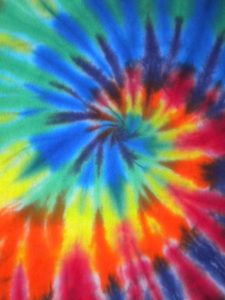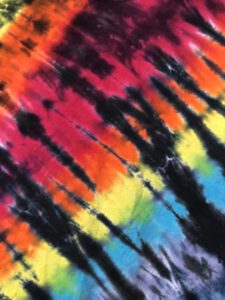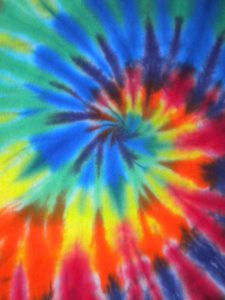Spring Into Tie-Dyeing

Close up of Spiral Tie-Dye Technique
Get a jump start on your warm weather attire with some colorful designs of tie-dye. The designs can be as complicated or simple as you'd like. There are several different patterns you can try to achieve or you can make up something completely new.
You might think tie-dying started in the 1960s with the American Hippies, but the concept actually has a much longer history. The art form appears in may different cultures from around the world. The Japanese call it Shibori. The Shipibo and Yine tribes in the Peruvian Amazon use tree bark and clay. Meanwhile in China a tie-dye tradition is called zha ran and started in the Qin or Han Dynesty. In the Fouta Djallon region of northern Guinea there is a tie-dyeing tradition called "Thioub" material.

Reverse Tie-Dye Technique
Typical modern tie-dye is characterized as twisting, folding, pleating or crumbling fabric or other garment and binding with string or rubber bands, then applying the dyes. Stephanie Lynn describes 16 tie-dye techniques on her website. This video will work better for the more visual learners. There are kits available in craft stores and online. Always check the directions to correctly use the product. Check out this booklist of resources in the library.
Above all have fun. Tie-dyeing is an activity for all ages and experience levels.That means there is no wrong way. Once you get comfortable with the basics, here are some advanced techniques to try.













